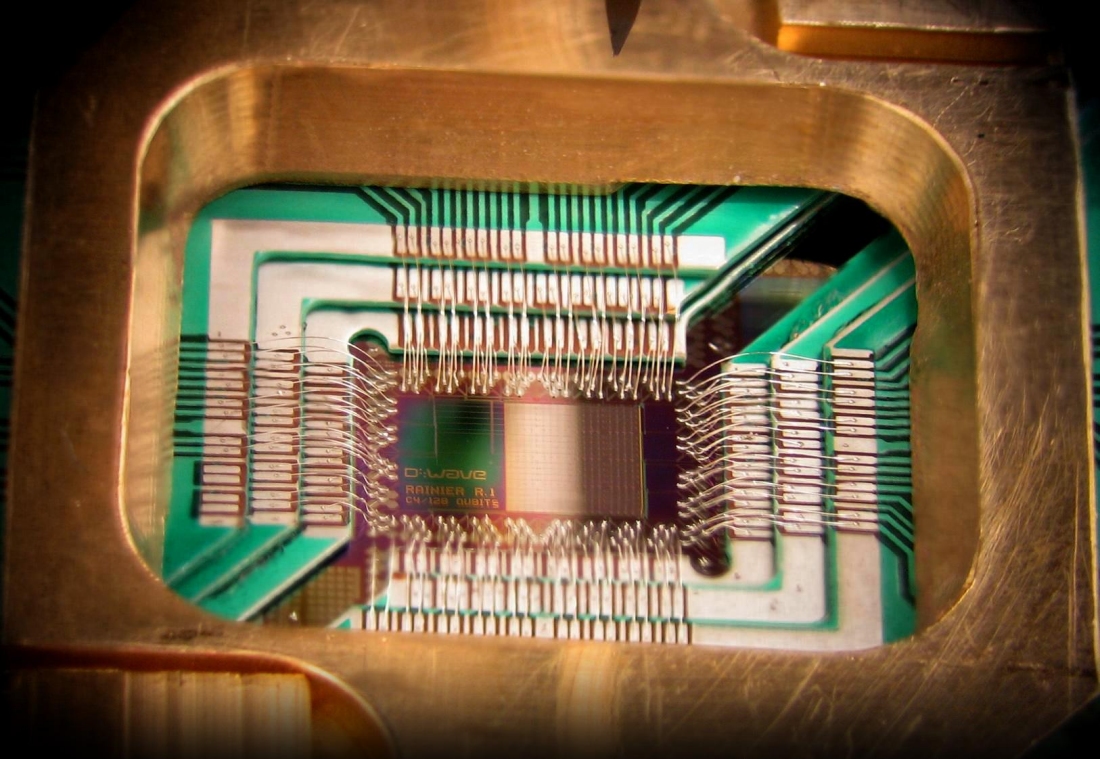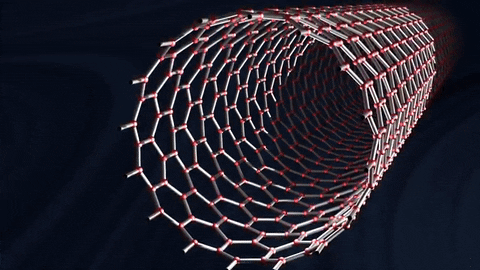| Massive reductions in insurance costs are coming, along with a wave of disruption. Traditionally, insurance premiums are determined by actuaries… a function of big numbers, statistics and probabilities. That's what you have to do when you don't know what's really going on. You hope that the pool of insured individuals is big enough to account for the variation in your predictive model. But exponential technologies -- namely computation/digitization, artificial intelligence, machine learning, sensors, networks (especially social networks), and genomics -- will change all of that. This is a blog about the future of insurance… Let's dive in. Disrupting InsuranceI have been advising and am a proud board member of a new company called Lemonade Insurance Company that is rebuilding the insurance model from the bottom up -- it is the world's first "peer-to-peer" (P2P) insurance company. Imagine just 90 seconds to get insured, 3 minutes to get paid. Zero paperwork. P2P reverses the traditional insurance model. They treat the premiums you pay as if it's your money. With P2P, everything becomes simple and transparent. Lemonade takes a flat fee, pays claims really fast, and gives back what's left to causes you care about. This week Lemonade launched their service and announced that they've been licensed as a full-stack insurance carrier by New York State for homeowner and renter's insurance. The work they've been doing is brilliant, so I'll be using them as a strong example of some of the following ideas. Let's talk about five exponential drivers of this upcoming insurance revolution… 1. DigitizationFraud consumes as much as 38% of all the money in the traditional insurance system, inflating premiums by $1,300 and making the claims process protracted and unpleasant. This happens because there is a lack of transparency in a largely analog (rather than digital) system with many humans in the loop. If you could digitize the entire process – from signing up to submitting a claim – and give the insured individual full transparency over the status of their request, adding in automation and machine learning, you can dramatically reduce processing time and costs. This is what Lemonade does at its core. "Technology drives everything at Lemonade," said Shai Wininger, president and cofounder. "From signing up to submitting a claim, the entire experience is mobile, simple and remarkably fast. What used to take weeks or months now happens in minutes or seconds. It's what you get when you replace brokers and paperwork with bots and machine learning. Zero paperwork and instant everything." 2. Implications of Social NetworksSocial networks will allow us to create true peer-to-peer insurance models. Imagine finding a group of peers, who you trust and can vouch for, and coming together as a group to self-insure. You skip the centralized, expensive middleman insurance carrier – instead, a technology stack (app, database, AI-bot) manages a decentralized network of people who pay premiums and file claims that the group approves. This takes out an enormous percentage of the cost structure of traditional insurance. Instead of paying fees and insurance company salaries, your peer group will be able to decide what to do with the extra cash that wasn't paid out. At Lemonade, you actually have the option to donate underwriting profits to nonprofit organizations of your choosing. Their hope is to remake insurance as a social good, rather than a necessary evil. 3. Implications of GenomicsWhen talking about life insurance, it's going to be difficult to ignore genomic data. Your DNA is your medical future. It's predictive of what's likely to inflict or kill you. In 2008, a federal law called the Genetic Information Nondiscrimination Act (GINA) was passed to protect people from genetic discrimination in health insurance and employment. The law states, "Genetic discrimination is the misuse of genetic information." However, life insurance companies are exempt from GINA. I imagine that, soon, groups with great genes will coalesce and self-insure. It's in their best interest to do so. You'll be able to upload your genomics data and find others in your peer group that have similar or better risk profiles than you do… For life insurance companies, I believe there is a beautiful alignment of incentives coming soon. These life insurance companies will use genomics information to help their clients stay alive longer. Why? Because the longer they are alive, the more premiums they can pay… 4. Implications of SensorsSensors will allow insurance policies to be based on actual data (e.g. usage, health), rather than general heuristics and rules. As an analogy, check out Progressive Insurance's SNAPSHOT Automotive Sensor package – it's a sensor you put in your car that tracks how well you drive. (Do you brake hard? Speed? Take high-speed turns?) When your insurance policy is based on how you actually drive, rather than just your age, gender and what kind of car you own, safer drivers win. Sensors will have the biggest impact on health insurance, as hundreds of new health sensors are coming to market in the next 5-10 years. Sensors tracking healthy behavior such as how much you exercise and what you eat, will get you low insurance costs. A number of health insurance companies are already using health sensors in their policies. One notable company called Oscar uses technology to simplify the entire health insurance experience. You can use their app to talk to a doctor and get prescriptions without leaving home. They built an app that helps you keep track of your health history with a timeline and you can earn rewards for staying active with a free Misfit step tracker. In the near future, with the peer-to-peer model, you'll soon upload everything from what you eat to the number of steps you take per day, and find a group with similar health profiles and self-insure. 5. Implications of A.I. & SensorsThe car insurance industry is about to get disrupted in a huge way. Every major car company is working on full or partial autonomy, and since these cars are projected to reduce accidents by up to 90%, these cars are the beginning of the end for car insurance. On top of that, why would I need a car insurance policy if I never drive? Or if I don't own a car? Accounting firm KPMG predicts that the motor insurance market may shrink by 60% by 2040. I think that number is a serious underestimate. There is certainly a looming legislative battle coming for auto industry and auto insurance stakeholders. Does liability fall on car manufacturers? "Drivers"? Software engineers? AI's? It remains to be seen. Whatever the case may be, insurance, across the board, is ripe for disruption. Join MeThis is the sort of conversation we explore at my 250-person executive mastermind group called Abundance 360. The program is highly selective. If you'd like to be considered, apply here. Share this with your friends, especially if they are interested in any of the areas outlined above. P.S. Every week I send out a "Tech Blog" like this one. If you want to sign up, go to Diamandis.com and sign up for this and Abundance Insider. P.P.S. My dear friend Dan Sullivan and I have a podcast called Exponential Wisdom. Our conversations focus on the exponential technologies creating abundance, the human-technology collaboration, and entrepreneurship. Head here to listen and subscribe: a360.com/podcast If you wish to stop receiving our emails or change your subscription options, please Manage Your Subscription PHD Ventures , 800 Corporate Pointe, Suite 350, Culver City, CA 90230 |
Sunday, September 25, 2016
Saturday, September 24, 2016
Fw: Abundance Insider: September 23 Edition
| From: Peter Diamandis <peter@diamandis.com> Sent: Friday, September 23, 2016 12:01 PM To: STeve Reply To: peter@diamandis.com Subject: Abundance Insider: September 23 Edition |
In this week's Abundance Insider: Delivery van drones, crowd-powered robot painters, and drone-delivered burritos.
Cheers,
Peter, Marissa, Cody, Kelley, Greg, Sydney and AJ
P.S. Send any tips to our team by clicking here, and send your friends and family to this link to subscribe to Abundance Insider.
Daimler to Work With Matternet on Delivery Van Drones

What it is: Daimler AG has announced a partnership with Matternet to develop delivery drones for its networked electric vans. Daimler's vision is that a delivery drone would team up with a human driver to deliver packages. "If a parcel service provider stops his vehicle in a residential area, it will be possible to deliver multiple packages to nearby consignees autonomously by air -- even if they are not at home -- in addition to manual delivery," Daimler said. (Fun Fact: Matternet is a U.S.-based startup that came out of the 2011 Singularity University GSP.)
Why it's important: Here's a promising example of how legacy automakers can use their R&D budget. By partnering with disruptive startups in a different area of transportation -- in this case, drones -- Daimler can differentiate its networked van from the competition. Will this human-technology teamwork outperform Amazon's delivery drones, Starship Technologies' delivery robots, and human parcel delivery drivers? Join the Discussion
Spotted by Peter Diamandis
The Crowd-Powered Robot That Paints Like Da Vinci

What it is: Instapainting founder Chris Chen recently created the first painting robot that is entirely controlled online by the crowd. Using the Twitch social video chat platform, Chen's community can code commands that instruct the robot where to paint on the canvas. The resulting art is sold on eBay, with proceeds benefitting the healthcare crowdfunding organization Watsi.
Why it's important: We've been watching collaborative robots closely, primarily for their power to dematerialize and demonetize labor. Although most of these robots have been built for use in industrial, construction or healthcare settings, Chen's painting robot illustrates how a globally distributed group of human creatives in the arts and entertainment industries might collaborate with robots in the near future. Join the Discussion
Spotted by Aryadeep S. Acharya
Costa Rica Has Gone 76 Straight Days Using 100% Renewable Electricity

What it is: For the past 2+ months, Costa Rica has been operating on 100% renewable power (mostly hydropower and geothermal energy). Unlike wind and solar, hydropower can run at all times, unless the source's output is impacted by weather. Recent heavy rains enabled four of the country's dams to perform above usual capacity, making it possible to serve the country's energy needs without diesel generators.
Why it's important: Although Costa Rica's strategy is a major step in the right direction, it's not one we can exactly duplicate around the world, as most of the world's countries lack the geography and climate necessary to build and sustain hydroelectric dams. That said, Costa Rica's governing body figured out how to leverage its unique location and natural resources to generate the most sustainable energy possible -- a technique other regions can still emulate, even if they must get more creative to achieve a similar result. Join the Discussion
Spotted by Prithvi Raj

Google Drones Will Deliver Chipotle Burritos at Virginia Tech

What it is: Google X's Project Wing plans to test the delivery of Chipotle burritos via drones to a closed site at Virginia Tech later this month. In the meantime, Google will excute hundreds of delivery tests before the project is prepared, using a Chipotle truck in a closed site on campus. The autonomous drones will carefully lower burritos to hungry students via a tether, all the while testing delivery techniques for sensitive cargo.
Why it's important: Drones are getting smarter, cheaper, more reliable and easier to deploy than ever before. As exponential technologies continue to advance, we can expect drones to autonomously deliver a variety of precious cargo, from meals to medical care. Join the Discussion
Spotted by Peter Diamandis
Google's Secret Plan For Quantum Computing Supremacy
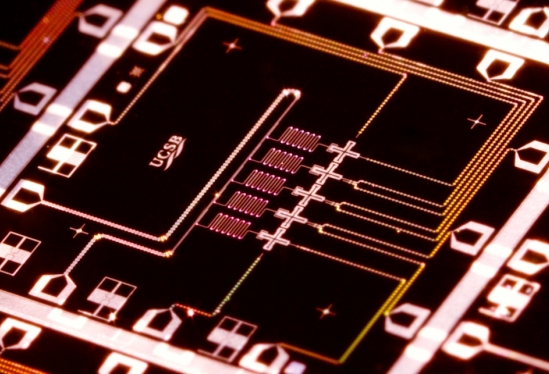
What it is: Google is developing a 50 qubit quantum computer that it believes will outperform the world's top supercomputers. Google's ambitious goal is to achieve "quantum supremacy," which would be achieved when "quantum devices without error correction can perform a well-defined computational task beyond the capabilities of state-of-the-art classical computers," as the authors of an arXiv paper explain.
Why it's important: The next paradigm in computation technology is shaping up to be quantum computing, with companies like Google, IBM and Rigetti Computing leading the charge. A quantum computer with 300 qubits can run more calculations in an in a second then there are atoms in the universe. This unimaginable leap in computing will have vast implications across new drug and material discovery, cryptography and machine learning. Join the Discussion
Spotted by Peter Diamandis
Boeing Unveils Gamechanging Autonomous Submarine

What it is: Boeing has just announced its Echo Voyager unmanned underwater vehicle (UUV), able to remain underwater for months using its hybrid rechargeable power system. New Atlas notes that the 51-foot UUV doesn't require a surface support vessel to launch and retrieve it; instead, Echo Voyager can surface at regular intervals, transmit data to researchers, and head right back to work.
Why it's important: Today's Boeing UUVs can only stay underwater for two- or three-day missions. Because Echo Voyager can operate autonomously for weeks -- or months -- at a time, it enables researchers to explore the oceans like never before. Join the Discussion
Spotted by Aryadeep S. Acharya
Looking for the Perfect Mattress? Try One You Can Customize

What it is: Mattress companies, such as Helix Sleep, Reverie and ReST are working to bring mattress customization to a whole new level. What makes these mattresses different from mechanically controlled ones is that this customization happens entirely within the mattress. This article covers some of the leading innovators in a market that generates $7 billion of revenue per year.
Why it's important: Sleep is one of the most important aspects of our lives, but there hasn't been a significant change in how we understand and adjust our sleeping surface for years. Modern, "smart" mattresses could eliminate a variety of health-related hassles most of us accept as normal, from stiff necks to snoring. Join the Discussion
Spotted by Ron Bushman
Nemo-Inspired Drug Delivery Robot is 100 Times Smaller Than a Grain of Sand

What it is: Jinxing Li and his team of medical researchers at the University of California, San Diego and Harbin Institute of Technology have created a "nanofish" capable of carrying drugs to specific sites of the body, with a design inspired by the Pixar movie Finding Nemo. "We created a nanoscale robot which mimics the fish swimming [motion]," Li told Digital Trends. "The size of the nanorobot is even smaller than a red blood cell. We expect this nanofish robot would be used for precise medicine delivery, manipulation of single cells, or [performing] non-invasive surgery."
Why it's important: Peter's blog on nanorobotics mentioned the implications of nanotechnology on health and wellness. These "nanofish" are just the beginning of our biology's integration with machines. Could small antibody-mimicking robots be used to augment our immune system as we know it? Join the Discussion
Spotted by Marissa Brassfield
Chinese Visual Tech Company Launches World's First 3D+VR Handset

What it is: SuperD Technology recently announced the SuperD D1, the first smartphone to seamlessly integrate and switch between 2D, 3D and virtual reality content. The phone will have a unique approach to its camera technology -- as China Daily reports, the SuperD D1 camera will "...[deploy] a front dual camera, with one of the cameras recording the images and the other tracking the exact position of the user's eyes, [allowing] customization and the simultaneous generation of visual images based on the precise position of the eyes, as well as the interpupillary distance."
Why it's important: Most of today's mainstream smartphones, while more powerful than ever, represent incremental improvements. SuperD's approach of integrating 2D, 3D and virtual reality content in a single smartphone could represent the new wave of smartphone innovation -- should the Chinese market respond positively. Join the Discussion
Spotted by Marissa Brassfield
What is Abundance Insider?
This email is a briefing of the week's most compelling, abundance-enabling tech developments, curated by Marissa Brassfield in preparation for Abundance 360. Read more about A360 below.
Want more conversations like this?
At Abundance 360, Peter's 250-person executive mastermind, we teach the metatrends, implications and unfair advantages for entrepreneurs enabled by breakthroughs like those featured above. We're looking for CEOs and entrepreneurs who want to change the world. The program is highly selective. If you'd like to be considered, apply here.
Know someone who would benefit from getting Abundance Insider? Send them to this link to sign up.
PHD Ventures , 800 Corporate Pointe, Suite 350, Culver City, CA 90230

Sunday, September 18, 2016
Fwd: next sexual revolution
Sex is one of the most powerful, fundamental human drives.
It's caused wars… built and destroyed kingdoms.
It occupies a significant percentage of most people's thoughts.
As such, it's worth a conversation about how exponential technologies will change our relationship with sex.
This blog (Part 1 of 2) is a look at the future of sex, dating, and finding a mate. Next week, in Part 2, we'll dive one level deeper and discuss the future of human reproduction.
Dating in the Internet Age
Dating in past generations was local and linear. You had access to a small number of potential mates based on where you lived, where you went to school and your social status.
In the 1960s, over 50% of marriages globally and 95% of marriages in India were arranged.
Today that number has dropped to less than 15% (globally).
In 1960, the median age at first marriage for the bride was 20 and the groom was 23 years old.
Today, the median age is closer to 29 for women and 30 for men.
A cultural shift is happening, and it's changing the game.
Dating has gone digital. As such, it has gone from local and linear to global and exponential.
Today, 40 million Americans use online dating services (that's about 40% of the single population in the U.S.), driving the creation of a $2.4 billion online dating industry.

(Number of members of online dating platforms, 2014)
These services transcend geography and social strata. People are matched from around the world.
Between 1995 and 2005, there was exponential growth among heterosexual couples meeting online. (See the green line in the chart below.) (Heterosexual marriage trends over time)
(Heterosexual marriage trends over time)
For same-sex couples, the online dating trend has been even more dramatic, with more than 60% of same-sex couples meeting online in 2008 and 2009 (see the green line in the chart above).

(Same-Sex Couples – trends over time)
The implications of this are staggering -- besides moving the marriage age back, there are a number of sociological effects such as decision fatigue, gamification of dating, and the commoditization of people that will start to have population-level effects as mating behaviors change.
And this is just the beginning.
Dating & Exponential Tech
In the very near future, we will see machine learning / artificial intelligence-based matchmakers that will find the perfect match for you based upon everything from your genomics to your psychographics.
Once you're on a date, your augmented reality glasses will give you real-time dating info, calling up any info you want to know, as you need to know it.
Perhaps you want to understand how she/he is feeling about you, and your AR camera is watching her pupillary dilation and capillary flushing.
Like all technology, these applications are double-edged swords. My hope is that this tech actually increases the number of successful, meaningful relationships in the world and, in turn, has a net positive impact.
But while dating is one side of the coin, sex is another... and the implications of exponential technology on sex can be shocking.
Sex & Exponential Tech
Today, sex has been digitized; as such, it has been dematerialized, demonetized and democratized.
Sex, in the form of pornography, is free, available to anyone with an Internet connection and pervasive across many platforms.
In 2015, just one pornography website reported that their users watched over 4.3 billion hours of porn (87 billion videos) that year.
The proliferation of Internet connectivity, online video players and streaming, mobile phones, and advertisement delivery networks have propelled pornography into a $97 billion industry.
This is causing a number of negative social phenomena.
More than half of boys and nearly a third of girls see their first pornographic images before they turn 13. In a survey of hundreds of college students, 93% of boys and 62% of girls said they were exposed to pornography before they turned 18.
"Pornography is influencing everything from how teens language and frame sexuality to how and why they pierce certain body parts to what they expect to give and receive in intimate relationships," says Jill Manning, Ph.D, Witherspoon Institute.
In Japan, a growing population of men report that they *prefer* having "virtual girlfriends" over real ones (i.e. they believe they are "dating" virtual avatars that they largely control).
Forty-five percent of Japanese single women and 25 percent of Japanese single men aged 16 to 24 claim they aren't even interested in sexual contact.
Given these trends, unless something happens to boost Japan's birth rate, its population will shrink by a third between now and 2060. In other words, there is serious concern of significant UNDERpopulation.
But again, this is only the beginning… as virtual reality (VR) becomes more widespread, one major application will inevitably be VR porn.
It will be much more intense, vivid, and addictive -- and as AI comes online, I believe there will be a proliferation in AI-powered avatar and robotic relationships, similar to those characters depicted in the movies Her and Ex Machina.
Implications
VR porn promises to offer a virtual world filled with more sex, better sex, endless sex, and new varieties of sex.
The dark secret, however, is that the further a user goes into that fantasy world, the more likely their reality is to become just the opposite.
Many psychologists believe that VR porn may numb us to sexual desire and pleasure in the real world, leading to less and less satisfying sex.
For many, VR (as well as other exponential technologies such as robotics, sensors and A.I.) will act as a complete replacement for intimacy and human relationships, as it is more easily accessible, cheaper, on-demand, and, well, controllable.
As the father of two five-year-old boys, this is really concerning to me...
That said, are there upsides too?
Perhaps a bit of intimacy (if even technological) for those who are infirmed, aged, crippled and thereby alone.
We shall see. One thing is for sure: as with every technology in history, from the printing press to VHS and the Internet, pornography will be on the front line funding the advance of technology.
Join Me
This is the sort of conversation we explore at my 250-person executive mastermind group called Abundance 360.
The program is highly selective. If you'd like to be considered, apply here. Share this with your friends, especially if they are interested in any of the areas outlined above.
P.S. Every week I send out a "Tech Blog" like this one. If you want to sign up, go to Diamandis.com and sign up for this and Abundance Insider.
P.P.S. My dear friend Dan Sullivan and I have a podcast called Exponential Wisdom. Our conversations focus on the exponential technologies creating abundance, the human-technology collaboration, and entrepreneurship. Head here to listen and subscribe: a360.com/podcast
PHD Ventures , 800 Corporate Pointe, Suite 350, Culver City, CA 90230

Friday, September 9, 2016
Fwd: Abundance Insider: September 9 Edition
| In this week's Abundance Insider: Self-driving tractors, Linden Labs' new VR user interface, and massive demonetization in India's telecommunications. Cheers, P.S. Send any tips to our team by clicking here, and send your friends and family to this link to subscribe to Abundance Insider. Self-Driving Tractors Promise to Get Themselves to Work, Plow Without Complaint
What it is: Although it might not look much different than your ordinary T8 Blue Power tractor, CNH Industrial's New Holland NH Drive Concept is quite the clever self-driving tractor. NH Drive's advanced built-in software enables humans to remotely monitor and directly control their tractors, which enables faster, more accurate results than human-controlled tractors. Why it's important: Advancements in autonomous car technologies have implications for all forms of motor-driven vehicles. Will the use of self-driving tractors lower farmers' production costs -- and, by extension, the price of food? Join the Discussion Spotted by Aryadeep S. Acharya Second Life Studio Invites VR Players to Try Project Sansar
What it is: Linden Lab, the company behind Second Life, has announced its latest creation: Project Sansar. CEO Ebbe Altberg describes Project Sansar as an interface that allows users to create their own virtual reality experiences, comparing it to "Wordpress for virtual reality." "Players will be able to interact with the world much like they currently do in Second Life," reports Engadget, "though in a relatively more scalable manner than they current[ly] do in that game, allowing for multiple instances of areas to exist in tandem with each other." Project Sansar will be compatible with multiple VR platforms, including the Oculus Rift and HTC Vive; after an invite-only beta, it will likely available to the public in early 2017. Why it's important: The Internet's user interface moment happened with the invention of the Mosaic Web browser, which enabled non-experts to build their own websites and build Internet-based businesses. Virtual reality hasn't had a similar user interface moment. Could Project Sansar be it? Join the Discussion Spotted by Marissa Brassfield IBM Partnership Puts Watson in Your Ear to Help You At Work
What it is: IBM has partnered with Bragi to combine Watson's Internet of Things platform with Bragi's smart earphones to help you collaborate with your teammates at work. Wearing these "hearables" in certain working conditions could ease communications among teams; for example, they can translate messages, provide instructions, and deliver smart notifications. Why it's important: In a previous blog on artificial intelligence and technology convergence, Peter noted that AI will become the most important human collaboration tool ever created due to its capacity to amplify our abilities. AI-enabled wearables like these earphones can potentially dissolve communication barriers, enabling a truly global economy. Join the Discussion Spotted by Marissa Brassfield
Share this quote: Facebook Twitter LinkedIn Google+ Quantum Computers Are Coming. The World Might Not Be Ready.
What it is: This Bloomberg editorial provides evidence that quantum computing is coming faster than you might imagine. It describes some of the most compelling applications, businesses investing in the field, and how organizations like Google are already working on security measures to beat quantum algorithms. Why it's important: Because a quantum computer could potentially break every form of public-key encryption currently used, we'll need to proactively (and rapidly) develop security mechanisms that can stay ahead of a quantum computer's algorithms. But it's worth the effort: As the Bloomberg editorial reads, "Quantum computers could simulate how atoms and molecules behave… they could solve optimization problems – say, how to efficiently route airplane traffic – far faster than current technology can. They could speed advances in artificial intelligence, improve sensors, and lead to the design of stronger and lighter industrial materials." Join the Discussion Spotted by Peter Diamandis White House Will Host a 'South by South Lawn' Fest in October
What it is: On October 3rd, the Obama's will host the first-ever "South by South Lawn" mini-festival, inspired by their talk at this year's SXSW. The event will stay true to the original festival's components -- Interactive, Film, and Music -- including panels and booths on new technology and innovations, with emphasis on how to make positive change stick. Why it's important: The two themes most prominent in the Obamas' daylong festival are change and inspiration -- concepts we'll need to create a world of abundance. "South by South Lawn" also demonstrates how government and world leaders can play a meaningful role in supporting innovation, creativity and entrepreneurship. Join the Discussion Spotted by Marissa Brassfield DeepMind Will Use AI to Streamline Targeted Cancer Treatment
What it is: DeepMind has collaborated with University College Hospital in London on an innovative approach to cancer treatment that aims to streamline the segmentation process for radiotherapy application. In this process, which can take several hours depending on the tumor's location, physicians typically analyze 3D scans and draw specifically where to apply radiation to kill a tumor without harming too much healthy tissue. DeepMind plans to streamline this with an algorithm based on the analysis of 700 anonymized scans of previous patients who had head and neck cancers. "Clinicians will remain responsible for deciding radiotherapy treatment plans, but it is hoped that the segmentation process could be reduced from up to four hours to around an hour," explained DeepMind in a press release. Why it's important: By nature, segmentation for head and neck cancers is much more complex and time-consuming than for cancers found elsewhere in the body; often, the tumor sits right next to major nerve centers and other critical anatomical features. By streamlining and automating this process with an algorithm, physicians can treat patients faster, easier and cheaper than ever before – and soon, we might see algorithms like this applied to other cancers. Join the Discussion Spotted by Marissa Brassfield India's Richest Man Launches 4G Network with Unlimited Free Voice Calls
What it is: This week, India's Reliance Jio mobile service is set to demonetize telecommunications in an epic fashion. Reliance chairman Mukesh Ambani, who's also the richest man in India, announced a new program that offers unlimited free voice calls (no roaming!), nationwide LTE network coverage (at a cost of 1GB of data for 50 rupees – about 75 U.S. cents), and support for future network technologies like 5G and 6G. "India and Indians cannot afford to be left behind," he said. "The era of paying for voice calls is ending." Why it's important: More evidence of massive disruption in the telecommunications industry. India's population is the second largest in the world. Demonetizing telecommunications in a market of this size will bring hundreds of millions of new people online and into the global economy. This initiative also disrupts the profitable status quo for Reliance's competitors, as many telecom businesses still earn significant revenue from voice calls. Join the Discussion Spotted by Gaetan Soltesz For First Time, Carbon Nanotube Transistors Outperform Silicon
What it is: Materials engineers at the University of Wisconsin at Madison, led by Michael Arnold and Padma Gopalan, have developed carbon nanotube transistors that outperform silicon transistors -- achieving a current 1.9 times higher than today's state-of-the-art silicon transistors. To achieve their breakthrough, they solved three major challenges of working with nanotubes: a) isolating ultra-high-purity semiconducting carbon nanotubes with polymers, b) optimally placing and aligning the nanotubes, and c) removing any processing residue from the nanotubes. Why it's important: "This achievement has been a dream of nanotechnology for the last 20 years," said UW's Michael Arnold, who led the research. "Making carbon nanotube transistors that are better than silicon transistors is a big milestone. This breakthrough in carbon nanotube transistor performance is a critical advance toward exploiting carbon nanotubes in logic, high-speed communications, and other semiconductor electronics technologies." Join the Discussion Spotted by Marissa Brassfield Google AI Builds a Better Cucumber Farm
What it is: Machine learning technology has had a dramatic impact on one Japanese family's cucumber farm, thanks to their tech-savvy son Makoto Koike. Taking inspiration from Google's AlphaGo experiment, Koike programmed a Raspberry Pi 3-based system that runs a small-scale TensorFlow neural network to identify the cucumbers, sort them by key attributes (e.g. color, size, shape), and finally transmit that information to the automated cucumber sorter. Why it's important: The temporal, economic and social considerations of using human laborers to analyze, harvest, classify and sort produce are considerable. Deep learning algorithms and sensor-equipped systems like this one eliminate these concerns, enabling farmers to focus their efforts on growing delicious food. Join the Discussion Spotted by Marissa Brassfield What is Abundance Insider?This email is a briefing of the week's most compelling, abundance-enabling tech developments, curated by Marissa Brassfield in preparation for Abundance 360. Read more about A360 below. Want more conversations like this?At Abundance 360, Peter's 250-person executive mastermind, we teach the metatrends, implications and unfair advantages for entrepreneurs enabled by breakthroughs like those featured above. The program is highly selective and we're almost full, but we're still looking for a few final CEOs and entrepreneurs who want to change the world. You can apply here. Know someone who would benefit from getting Abundance Insider? Send them to this link to sign up. If you wish to stop receiving our emails or change your subscription options, please Manage Your Subscription PHD Ventures , 800 Corporate Pointe, Suite 350, Culver City, CA 90230 |
Sunday, September 4, 2016
Fwd: disrupting energy
---------- Forwarded message ----------
From: Peter Diamandis <peter@diamandis.com>
Date: Sunday, September 4, 2016
Subject: disrupting energy
To: STeve <stevescott@techacq.com>
<https://blogger.googleusercontent.com/img/proxy/AVvXsEglkGFIV3ETNg6hN32j6Y95RzC7BchqxMQJvWAj6RVTJ4GJwTttVSDYXuGYcpNJo7DslunhUN6om1jEeX14arezBur5klAQkcKOCHBibDt1WiWkaA3EAZanw9fPjAMnS6XJoOJ_vrS-pX1Y2JVpBbYHMcAtPwgqtdvORRCX57ipAuOT66LoL-59b2vAGgRkxooYHWfF5VFAve8ZMUdT=s0-d-e1-ft&stn=0&cid=1180&mid=26048691&aid=22289&aaid=2&time=1473008466>
We are at the cusp of an energy revolution.
This blog is a look at how three technologies – solar, batteries and electric vehicles (EVs) – are poised to disrupt a $6 trillion energy industry over the next two decades.
I had the chance to sit down with Ramez Naam, the Chair of Energy & Environmental Systems at Singularity University and acclaimed author of the Nexus series, to discuss these major forces and their implications.
Let's dive in.
1. Creating an Abundant Solar Economy
In 88 minutes, 470 exajoules of energy from the sun hits the Earth's surface, as much energy as humanity consumes in a year.
In 112 hours – less than five days – it provides 36 zettajoules of energy. That's as much energy as is contained in all proven reserves of oil, coal and natural gas on the planet.
If humanity could capture 1 part in 1,000 (one-tenth of one percent) of the solar energy striking the Earth – just one part in one thousand – we could have access to six times as much energy as we consume in all forms today.
These staggering numbers, in combination with an exponential decline in photovoltaic solar energy costs ($ per watt price of solar cells), put us on track to meet between 50 percent and 100 percent of the world's energy production from solar (and other renewables) in the next 20 years.
Solar is already undercutting coal and natural gas in sunny geographies.
Take a look at the plummeting costs…
<https://blogger.googleusercontent.com/img/proxy/AVvXsEhveR8KItNFPmKZH2aLSfLNhigOsQj5JCWCZFmDAXY2Y7oKaojr6hyphenhyphen7s9Yz0sXg4znskpG0zLPOMDJSkfhlIvTELVl5PBVB2QI4znayVKdcCTU5tjj_JJnmjniXh6YLf3U7PC2Z8YrGTrOQOk7GQWVkRLKPDCvdeVc6YR5AWdjBbLmW8_9fLx1cf0-OCQy8R2c=s0-d-e1-ft>
(Graph: Decreasing price per watt of photovoltaic cells)
Over the last 30 years, solar module prices have dropped by a factor of 100.
Critically -- a new solar price record was set in Chile just a few weeks ago at $0.0291 per kWh – 58 percent less than the price of natural gas from a new plant!
And this is just the beginning. How cheap can it get?
The graph below shows that, if solar electricity continues on its current demonetization trajectory, by the time solar capacity triples to 600GW (by 2020 or 2021, as a rough estimate), we could see global unsubsidized solar prices that are roughly half the cost of coal and natural gas.
<https://blogger.googleusercontent.com/img/proxy/AVvXsEjL0D7CSnWYUrNWd3ICLXsJNhao1qYORrz2HbaL8ZFHzHKmMcuHkbG4MQ4E-qjxLdnZa68r6QJwIsBgaaDnP1zE36VPPO78nT42u3iaobNgsUGIrmLweoqE5KJZ1Cmmllponv3ADvDEwRKegVmn-X9TwFbscrgM0cLxVd1X5Z59PMOvaBNPbgpEtoVE5w0mEQo=s0-d-e1-ft>
(Decreasing costs of solar electricity relative to other sources)
This is without factoring in the cost of air pollution and carbon pollution emitted by fossil fuel power plants.
2. Battery Technology is Reaching an Inflection Point
Of course, one limitation of solar is that it's only available during the day. We'll need breakthroughs in battery technology to transition fully into a solar economy.
The good news is that battery technology and energy storage are also hitting an inflection point.
Here are five trends shaping the future of battery technology and energy storage:
Lithium-ion Technology: Lithium-ion batteries have been seeing rapidly declining prices for more than 20 years, dropping in price for consumer electronic uses by 90 percent between 1990 and 2005, and continuing to drop since then. This price reduction is coupled with an 11x increase in battery storage capacity per $100 since 2000.
Scaled Production: The rollout of Tesla's Gigafactory makes $100 per kwh lithium-ion batteries in electric vehicles possible by 2020. This price point would yield an astonishing $0.11 per kWh electricity storage -- or, in other words, allow you to fill up the equivalent of a tank of gas for $9.35.
Flow Batteries: Flow batteries are just starting to come to market and have been proven in the lab to operate for 5,000 charge cycles or more. This is a 10x improvement over standard consumer lithium-ion batteries.
Compressed Air Storage: Companies like LightSail Energy are creating physical components rated for 10,000+ charge cycles.
Time of Use Arbitrage: The U.S. is increasingly going to time-of-use charges for electricity. Right now that means charging consumers a low rate in the middle of the night (when demand is low) and a high rate in the afternoon and early evening (when demand is at its peak, often twice as high as the middle of the night).
These are just a few of the developments happening.
The real key here is that we are going to see a mindset shift in the near future. It will just be accepted that every home will be powered by a combination of batteries, rooftop solar and electric vehicles (i.e. Tesla's vision)… and we'll gawk disapprovingly at the idea of driving an explosive, expensive and environmentally damaging gas vehicle, and so on.
3. Electric Vehicles (EVs) Are Gaining Speed
Electric vehicles (EVs) are taking the transportation industry by storm.
Within the next two decades, EVs will undoubtedly be the cheapest and most widely used vehicles on the market.
Take a look at the chart below. By roughly 2030, EVs with a 200+ mile range are going to be cheaper than the cheapest car sold in the U.S. in 2015.
<https://blogger.googleusercontent.com/img/proxy/AVvXsEjMHQ2-yY7zY2zcALWatuEs94W4sU4xAT979iW028h9dqbBYZj-RxakElqAoEYyjzbLKnfRAwNSWrXTRyVofUccSFryWMAWeHcSdoByXo58PyuNzHiRz2jbE3MMjwxxfw0dKix81B90GR-dZ3dVL51pjJfTGNoLsN9o7mcLxVsmJ-XBhGvkV4uywCRyldAY1yw=s0-d-e1-ft>
(Decreasing cost of EV from 2016-2035)
The primary factor driving this decreasing cost is that EVs are inherently simpler devices only possessing 10% of the moving parts of gasoline-powered vehicles (cheaper to build, cheaper to maintain).
Every major car manufacturer is working on electric vehicles – the number of EV models on the market has grown from 2 in 2010 to over 25 today.
Just four months ago, Tesla Motors shattered expectations with the biggest one-week launch of any product ever by taking 400,000 preorders for its $35,000 Model 3 (implying $14 billion in future sales).
Ford has followed suit, investing $4.5 billion in electric cars, and will be adding 13 electric cars and hybrids by 2020, making more than 40 percent of its lines electrified.
Bringing It All Together
The convergence of solar, energy storage and electric vehicles (EVs) creates a trifecta of disruptive forces hitting the energy industry over the next two decades.
Again, in 88 minutes, the sun provides 470 exajoules of energy, as much energy as humanity consumes in a year. Just think about this…
This raw energy combined with the economic feasibility of solar, advancements in energy storage, and the resurgence of the electric car will allow abundant cheap energy for everyone on the planet.
This is an incredibly exciting time for the energy industry, and an incredibly exciting time to be alive.
Join Me
This is the sort of conversation we explore at my 250-person executive mastermind group called Abundance 360.
The program is highly selective. If you'd like to be considered, apply here. Share this with your friends, especially if they are interested in any of the areas outlined above.
P.S. Every week I send out a "Tech Blog" like this one. If you want to sign up, go to Diamandis.com and sign up for this and Abundance Insider.
P.P.S. My dear friend Dan Sullivan and I have a podcast called Exponential Wisdom. Our conversations focus on the exponential technologies creating abundance, the human-technology collaboration, and entrepreneurship. Head here to listen and subscribe: a360.com/podcast
If you wish to stop receiving our emails or change your subscription options, please Manage Your Subscription
PHD Ventures , 800 Corporate Pointe, Suite 350, Culver City, CA 90230
<https://blogger.googleusercontent.com/img/proxy/AVvXsEiZOt5u9PJk0Oeo8aRiPKQ27fWMWYFlXeGi7ADmpGdFmDX5U3-rCtR6xFZh0aMtGXL7yz5TLRs6eGJ3mB9__r4Ica6MovTLUxuT3UCDA3Y1BPZ6NC40EqluT_f8PLDHRzQ4hJP32GXjVci1943minNV4B4rZDPcgsdyNwzqkA=s0-d-e1-ft>
Friday, September 2, 2016
Fwd: Abundance Insider: September 2 Edition
| - In this week's Abundance Insider: Self-driving Singapore taxis, a solution to Wi-Fi spectrum crunch, and autonomous soft robots without electronics. Cheers, P.S. Send any tips to our team by clicking here, and send your friends and family to this link to subscribe to Abundance Insider. World's First Self-Driving Taxis Debut in Singapore What it is: Singapore officially hosted the first self-driving small-scale taxi fleet offered free to the public, thanks to a company called nuTonomy -- beating Uber's plan to debut in Pittsburgh next month. NuTonomy plans to grow its mini fleet of six into a fully functioning, autonomous fleet by 2018, with the hope that urban cities around the world adopt its model and ultimately help decongest overcrowded urban roads. Why it's important: One of Peter's primary reasons for predicting a massive decline in auto sales is due to the impact of the "autonomous Uber" and similar "car-as-as-a-service" operations. NuTonomy's self-drving taxi fleet is just a taste of what we can expect from auto and tech companies aiming to solve congested metropolitan roads and help people more seamlessly get from point A to point B. Join the Discussion Spotted by Aryadeep S. Acharya Now You Can Finally Use Your Drone to Make Money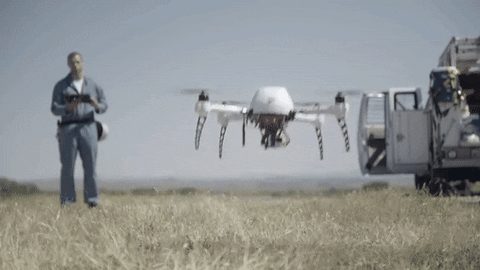 What it is: In a few days, becoming a commercial drone pilot will be almost as easy as getting a driver's license. Technically, the public has been able to commercially fly drones since 2014 with an exemption from the Federal Aviation Administration; however, the new federal rules remove this restriction and enable licensed drone pilots to execute a much wider range of personal and commercial applications. The FAA's new mandate also highlights the drone specifications required for flight, including weight, altitude, flight zoning limitations and drone proximity to crowds. "The vast majority of commercial uses that we can think of fall into that space perfectly," says Chris Anderson, CEO of drone manufacturer 3DR, to MIT Technology Review. "It's a nice alignment between what's safe, what the FAA feels is an easy thing to do now, and what's commercially attractive." Why it's important: Thus far, aerial photography is the No. 1 commercial use for drones, but expect to see a more diverse range of commercial applications as these new FAA regulations go into effect. This MIT Technology Review article features just some of the companies hungry to take advantage of the new regulations, including security firms, telecommunications companies and insurance providers. Join the Discussion Spotted by Marissa Brassfield MIT Researchers Solve the Spectrum Crunch to Make Wi-Fi 10x Faster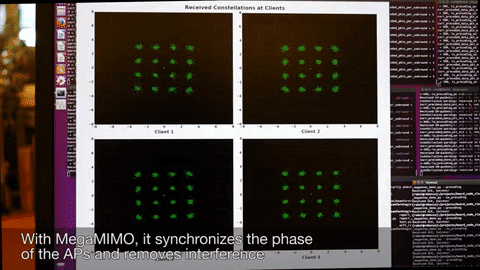 What it is: Researchers at MIT's Computer Science and Artificial Intelligence Laboratory have created a new Wi-Fi system that solves a critical issue: spectrum crunch. This phenomenon occurs when Wi-Fi signals interfere with each other in a restricted environment -- for example, you're at a football stadium for a game, and your smartphone data speed is unusably slow. At the heart of the MegaMIMO system (short for Multiple Input, Multiple Output) is an algorithm that helps routers transmit data on the same wireless spectrum with minimal signal interference. The system performs up to 10 times better than traditional Wi-Fi setups in high-traffic conditions. Why it's important: McKinsey and other research firms predict we'll have between 20 billion and 30 billion Internet-connected devices by 2020 – under four years from now. To make these connected devices usable, we'll also need to upgrade our Internet infrastructure, perhaps using algorithms like this one. Join the Discussion Spotted by Dan Swift Introducing the First Voice-Activated Hotel Room What it is: Aloft Hotels recently rolled out the first voice-activated hotel room. Now guests can adjust their room's temperatures, turn lights on and off, and request services using their voice. Behind the scenes, Aloft's app, Apple's Homekit and Siri work together to carry out all commands preceded by a familiar phrase to iOS users: "Hey Siri." Why it's important: Peter's perspective is that AI will become the most important human collaboration tool ever created. Will this human-technology teamwork -- in this case, an always-on AI assistant in your hotel room -- have enough of a positive impact on the guest experience to become a mainstream feature? Join the Discussion Spotted by Marissa Brassfield VR Will Let Jurors Explore Crime Scenes as They Actually Appeared What it is: Ph.D researcher Mehzeb Chowdhury from Durham University in the U.K. hopes to modernize the way jurors evaluate a physical crime scene with his NASA-inspired MABMAT rover. The $400 robotic imaging system uses open-source software, two inexpensive microcontroller boards, Arduino and Raspberry Pi to capture high-res, 360-degree footage of a scene. Jurors can play and interact with the resulting VR footage on smartphones using Google Cardboard or any standalone VR headset. Why it's important: Another example of technology mitigating or removing biases -- in this case, memory biases. "Unlike 3D recreations," Chowdhury explained to Digital Trends, "[my system] would be true representations of how things were, rather than a user-created propaganda video to sway the jury. The most-problematic aspect of crime scene visits is that, with time, every characteristic of the scene changes in some way or the other... a contemporaneous snapshot of the entire crime scene would preserve the necessary details for investigation and trial." Join the Discussion Spotted by Marissa Brassfield The First Autonomous Soft Robot Powered Only by a Chemical Reaction What it is: Researchers at Harvard University have just released the first autonomous soft robot, dubbed the Octobot due to its resemblance to the sea animal. The robot is completely chemically powered: its pneumatic-based system is fueled by hydrogen peroxide, and a microfluidic logic base governs the robot's critical chemical reaction. As the hydrogen peroxide decomposes into gas, it triggers actuators, which regulate the flow of gas and fluid to inflate the robot's arms. Why it's important: Soft robotics engineers are currently facing a tough challenge: designing flexible alternatives to typical battery components such as batteries and electronic controls. Octobot's electronics-free approach is a promising proof of concept that could inspire a new generation of powerful, chemically powered soft robots. Join the Discussion Spotted by Marissa Brassfield Smartphones Are Leading The Global Charge Against Blindness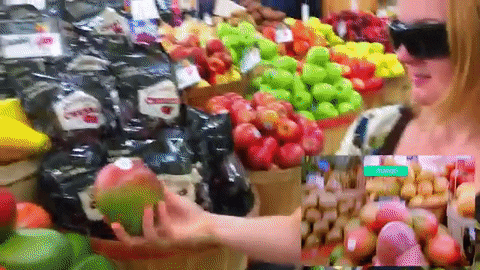 What it is: Smartphone apps are making strides to help improve the ease and reduce the cost for people to get better vision. With advanced technology systems and smartphone add-ons, a few key companies are helping people "see" with the assistance of their phones. This Fast Company article features the top players and their innovations. Why it's important: Smartphones are demonetizing and democratizing vision care to the 2.5 billion people in the world with poor vision and no access to vision correction. As Peter pointed out in a previous blog, "As more of these exponential developments continue, we will begin to unlock unfathomably productive capabilities and begin to understand how to solve the world's most challenging problems." Join the Discussion Spotted by Marissa Brassfield In 5 Years, the Midwest Will Have More Startups Than Silicon Valley What it is: Silicon Valley may be competing against the Midwest to maintain its tech dominance. This Venture Beat article shares two key data points on the future of the Midwestern United States: entrepreneurs are building more billion-dollar startups in the Midwest today than in the past 50 years, and more computer science degrees come from the Midwest than any other region or country in the world. Why it's important: Considering the skyrocketing cost of living in tech centers like San Francisco's Bay Area, it's no wonder that entrepreneurs are choosing to start their businesses in more unconventional yet economically feasible locations. "How many hospitals are there in Sillicon Valley?" asked CrossChx Founder Sean Lane in a VentureBeat interview. "How many healthcare payers are in Silicon Valley? How many engineers can I hire with the $500k I have in seed money? How much office space can I rent for $1 a square foot?" Join the Discussion Spotted by Marissa Brassfield What is Abundance Insider?This email is a briefing of the week's most compelling, abundance-enabling tech developments, curated by Marissa Brassfield in preparation for Abundance 360. Read more about A360 below. Want more conversations like this?At Abundance 360, Peter's 250-person executive mastermind, we teach the metatrends, implications and unfair advantages for entrepreneurs enabled by breakthroughs like those featured above. The program is highly selective and we're almost full, but we're still looking for a few final CEOs and entrepreneurs who want to change the world. You can apply here. Know someone who would benefit from getting Abundance Insider? Send them to this link to sign up. If you wish to stop receiving our emails or change your subscription options, please Manage Your Subscription PHD Ventures , 800 Corporate Pointe, Suite 350, Culver City, CA 90230 |




